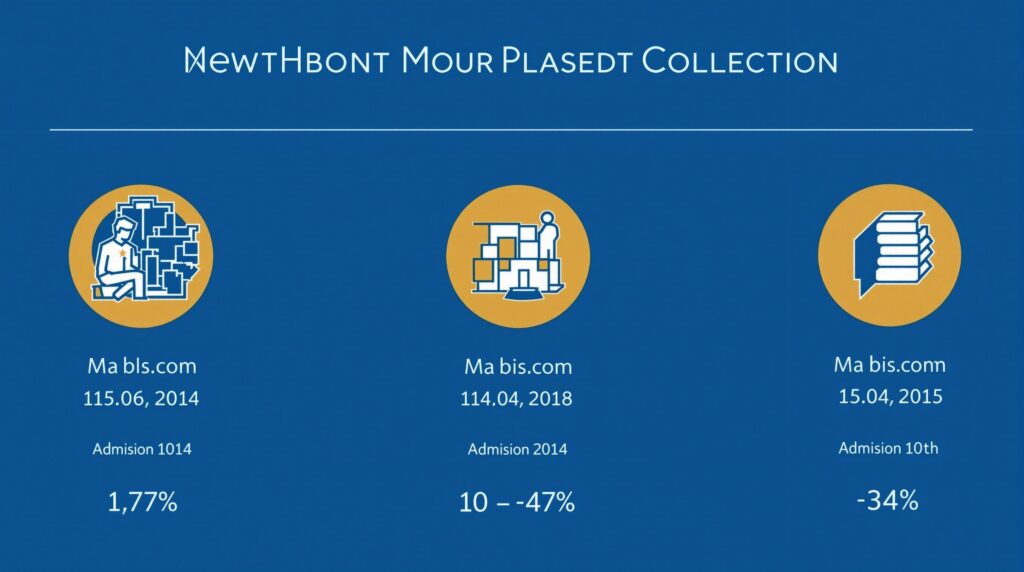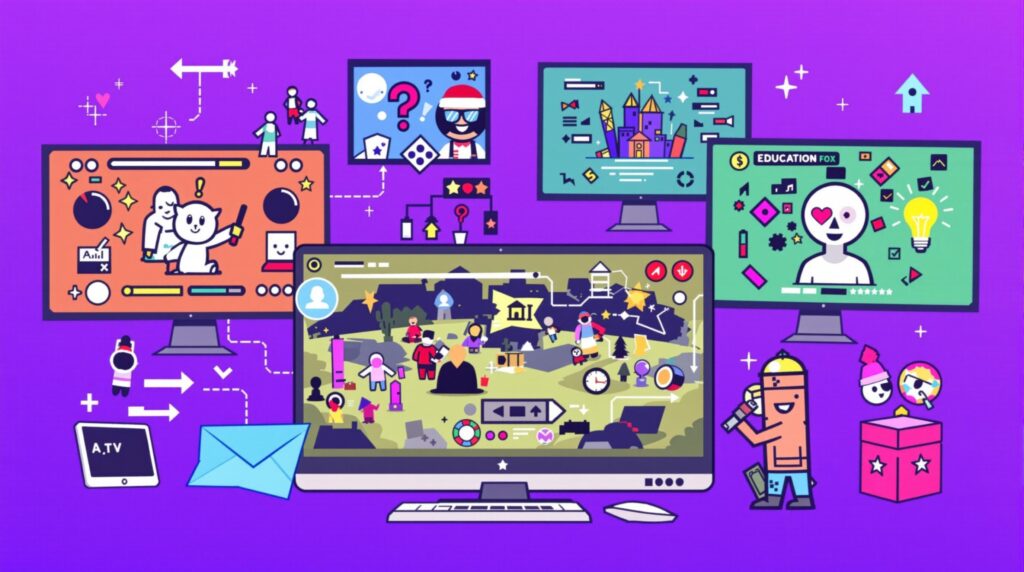The landscape of small business grant funding for educational startups and career training programs has evolved dramatically in 2025. What are the latest trends in small business grant funding? This year marks a significant shift toward AI-driven solutions, equity-focused initiatives, and more flexible funding models that prioritize measurable outcomes and community impact.
Key Takeaways
- AI-powered educational tools now dominate grant funding priorities, with the EdTech market projected to reach $404 billion globally this year
- Grant programs increasingly focus on equity and accessibility, with substantial funding allocated for underserved communities
- The rise of public-private partnerships is creating more sustainable and effective career training programs
- Many funders are shifting toward micro-grants and unrestricted funding models that offer greater flexibility to recipients
- Federal investment in STEM and green jobs training represents one of the fastest-growing funding categories
The AI Revolution in Educational Grant Funding
The EdTech landscape has undergone a dramatic transformation in 2025, with artificial intelligence taking center stage in grant funding priorities. After the post-pandemic funding drop to $5.4 billion in 2022, we’re seeing a significant rebound driven almost entirely by AI innovations. According to recent industry reports, 60% of this year’s EdTech grant recipients are developing AI literacy tools, including personalized learning chatbots and adaptive systems.
Phase IA IES SBIR grants now offer $250,000 for AI prototypes in education, with pathways to $1 million Phase II awards for successful implementations. This represents a substantial increase from previous funding levels and reflects the growing recognition of AI’s transformative potential in educational settings.
Major tech companies are also making significant contributions. Microsoft’s $75 million YouthSpark initiative is supporting AI-focused computer science education, with plans to expand its TEALS program to 700 schools by the end of the year. This program creates valuable partnerships between tech professionals and educators to bring cutting-edge AI skills into the classroom.

Equity and Accessibility as Grant Priorities
Grant funding in 2025 has placed unprecedented emphasis on equity and accessibility across educational programs. The Education Innovation and Research (EIR) Program has allocated $251 million specifically for STEM and social-emotional learning initiatives targeting high-need students. Meanwhile, the Spencer Foundation is offering grants ranging from $125,000 to $500,000 for research on systemic barriers in education.
The Good Jobs Challenge grants have introduced mandatory alignment with “Good Jobs Principles,” requiring recipients to provide:
- Complete wage transparency
- Comprehensive benefits documentation
- Clear advancement paths for participants
- Equitable hiring practices
F5 STEM grants of $50,000 are prioritizing AI literacy specifically for women and girls of color, with ten awards issued annually. This represents a significant shift from the more restrictive eligibility criteria common in 2020 grant structures, which often favored established institutions.
The Freed Fellowship exemplifies this new approach by offering $500 monthly micro-grants for diverse U.S.-based startups, removing many of the traditional barriers to funding access. These changes reflect a growing recognition that educational opportunity gaps require targeted intervention through grant funding mechanisms.
Workforce Development Grants for Underserved Communities
In 2025, workforce development grants have significantly expanded their reach into previously underserved communities. The Michigan Apprenticeship Expansion grants, totaling $1.9 million, specifically target underrepresented groups in non-infrastructure sectors like healthcare and advanced manufacturing. These grants focus on creating opportunities for women, veterans, and individuals with disabilities who have historically faced barriers to career advancement.
The EPA’s Brownfields Job Training grants represent another important trend, with $7.7 million dedicated to environmental remediation programs in communities affected by contamination. These programs create dual benefits: cleaning up environmental hazards while providing valuable job skills to local residents.
The Teshinsky Family Foundation has made headlines with its grants ranging from $25,000 to $100,000 supporting trades training with impressive outcomes – their 2024 programs achieved 100% placement rates for graduates. This success has prompted other funders to adopt similar approaches focused on concrete employment outcomes rather than simply training completion.
The U.S. Department of Labor has allocated $200 million for apprenticeship grants targeting emerging fields, including:
- K-12 teacher training programs
- Clean energy sector roles
- Healthcare technology positions
- Advanced manufacturing apprenticeships
These 2025 programs differ markedly from traditional apprenticeship models by incorporating hybrid learning frameworks that combine virtual and in-person training components, making them more accessible to participants with varied schedules and circumstances.
Public-Private Partnerships Transforming Career Pathways
One of the most significant trends in 2025 grant funding is the proliferation of public-private partnerships creating sustainable career pathways. The $15 million Texas TRUE grants exemplify this approach by funding short-term workforce programs (under six months) in high-demand fields like cybersecurity, healthcare, and logistics. These programs are designed with direct input from industry partners to ensure graduates have immediately applicable skills.
Microsoft’s TEALS program has created effective partnerships between tech professionals and educators, bringing real-world expertise directly into classrooms. This model has proven particularly successful for preparing students for AI-focused careers.
New Jersey’s $15 million UPSKILL grants support incumbent worker training, allowing businesses to upskill their existing workforce rather than replace them as technology evolves. This approach has proven particularly effective in industries facing rapid technological change.
ZenBusiness has introduced innovative $5,000 grants supporting community-impact startups less than six months old. Their focus on early-stage ventures fills an important gap in the funding landscape. The success of these collaborative models is evident in the significantly higher placement rates they achieve compared to traditional training programs.
Micro-Grants and Unrestricted Funding Models
The shift toward micro-grants and unrestricted funding represents one of 2025’s most welcome trends for educational entrepreneurs. NASE Growth Grants now provide $4,000 monthly for marketing or equipment to self-employed individuals, with minimal reporting requirements. This approach recognizes that small, timely injections of capital can often be more valuable than larger grants with complex restrictions.
The Freed Fellowship offers $500 monthly stipends plus $2,500 year-end grants across diverse industries, providing consistent support rather than one-time funding. EdVestors IDEAL Career Pathways grants are funding MyCAP integration in Boston schools, demonstrating the impact of targeted local investments.
ZenBusiness’s no-strings-attached $5,000 awards exemplify 2025’s emphasis on flexibility in funding. Recipients can allocate these funds based on their own assessment of priorities rather than preset categories. This represents a significant departure from previous grant models that required detailed budget reports and imposed numerous restrictions on fund usage.
The trend toward trust-based philanthropy in educational startup funding reflects growing recognition that entrepreneurs often know best how to allocate resources effectively. Grant recipients report that this flexibility allows them to respond more quickly to changing market conditions and student needs.
Federal Investment in STEM and Green Jobs Training
Federal funding for STEM and green jobs training has reached unprecedented levels in 2025. NASA’s SBIR/STTR Phase I program now provides $150,000 for space-tech education tools, with development cycles ranging from 6 to 13 months. These grants specifically target educational technologies that can prepare students for careers in space-related fields.
Department of Energy Clean Energy grants are prioritizing apprenticeships in growing sectors like offshore wind and solar energy. In Michigan alone, these initiatives have created 287 new roles in the past year. The connection between federal priorities (such as the CHIPS Act) and grant availability has created significant opportunities for training programs aligned with national economic goals.
The Good Jobs Challenge has awarded $8 million specifically targeting critical technology sectors, with a strong emphasis on creating equitable access to high-growth fields. This focus on clean energy transition has created entirely new funding streams for training programs that might have struggled to find support in previous years.
Educational startups focusing on STEM and green jobs should consider these targeted federal opportunities when seeking funding in 2025, as they often offer larger grant amounts and clearer pathways to sustainability than general small business grants.
Regional Innovation Hubs and Place-Based Funding
In 2025, we’re seeing a clear trend toward regional innovation hubs and place-based funding models. The $15 million Texas TRUE grants specifically target state-specific workforce needs, recognizing that labor market demands vary significantly by region. Michigan’s $1.9 million apprenticeship programs address regional manufacturing gaps with customized training solutions.
The EPA Brownfields grants, totaling $7.7 million, prioritize communities near contaminated sites, creating a direct connection between environmental remediation and local employment. EdVestors programs in Boston schools demonstrate a localized investment approach that accounts for the specific needs and opportunities in that community.
This trend toward funding programs with direct community economic impact represents a significant shift from previous approaches that emphasized national scalability over local relevance. The contrast between national grant programs and region-specific initiatives is particularly evident in placement outcomes, with the latter generally showing stronger results due to deeper connections with local employers.
Educational startups should consider how their programs address specific regional needs when applying for grants in 2025, as many funders now prioritize solutions with clear local impact.
Measuring Impact: New Success Metrics for 2025 Grants
Grant funding in 2025 has placed unprecedented emphasis on measurable outcomes and accountability. The Teshinsky Family Foundation’s focus on 100% placement rates as a key success indicator exemplifies this approach. Good Jobs Challenge grants now require wage transparency and benefits reporting as standard components of program evaluation.
We’ve observed a decisive shift from enrollment numbers to employment outcomes in funding priorities. Grant applications that can demonstrate clear pathways to employment consistently receive higher scores than those focused primarily on training completion metrics.
Data-driven approaches to measuring program effectiveness have become standard, with many funders requiring sophisticated tracking systems. AI-enabled tracking of long-term career outcomes for program participants allows for more nuanced evaluation of program success beyond immediate placement rates.
These increased accountability requirements represent a significant change from previous funding cycles, when process metrics often took precedence over outcomes. Educational startups seeking funding in 2025 should develop robust measurement frameworks that demonstrate their impact in concrete, quantifiable terms.



